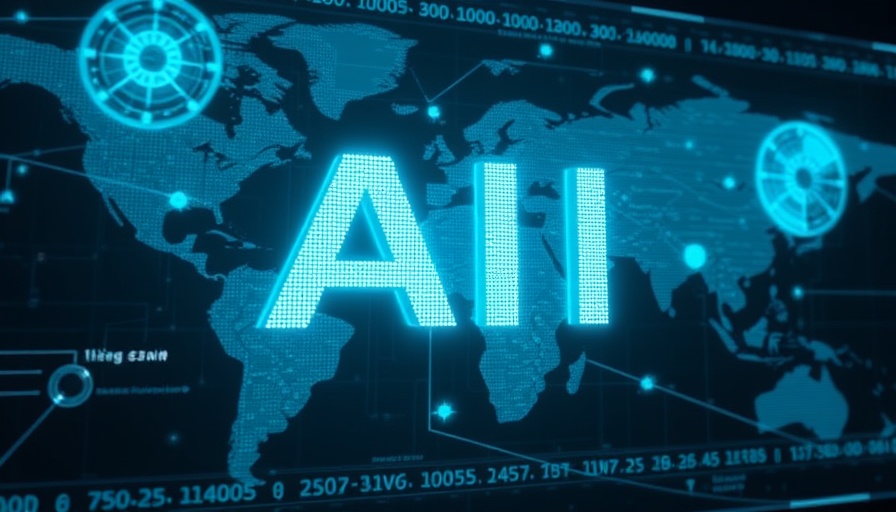
The Rise of Sovereign AI: What Does It Mean for Countries?
The landscape of artificial intelligence (AI) is evolving dramatically, transitioning from merely enhancing consumer products to becoming an essential aspect of national strategies. With countries around the world recognizing the power and importance of AI, the concept of Sovereign AI is becoming increasingly relevant. Defined as AI that exists within the jurisdiction of a specific nation or organization, Sovereign AI allows for control over regulations, ethical standards, and strategic priorities tailored to local needs.
Understanding Sovereign AI: Safety and Autonomy
Sovereign AI is more than just a trend—it's a framework that ensures nations remain technologically independent. As highlighted by experts like Nvidia's CEO Jensen Huang, AI is changing how we view national infrastructure, akin to energy and telecommunications. Nations such as the United States, China, and the UK are actively investing in initiatives, ensuring they develop AI systems that align with their unique national objectives. For instance, the U.S. initiative, Stargate, aims to build a sovereign AI that strengthens national security while protecting critical infrastructure from foreign influences.
Sovereign AI as a National Imperative
The implications of sovereign AI stretch far beyond mere technology. With global tensions and the potential for cyber threats from external entities, countries are beginning to see their technological sovereignty as a vital matter of national security. It is particularly crucial for sectors such as defense, where trust in AI systems can make the difference in strategic outcomes. By developing localized AI systems, nations can minimize risks associated with dependency on foreign technologies.
What It Takes to Develop Sovereign AI
Countries aiming to establish their own sovereign AI capabilities face significant challenges that need thoughtful strategies. Key areas that require attention include:
- Curating High-Quality National Datasets: To effectively train AI systems, countries must invest in gathering, maintaining, and updating quality local data that reflects their unique demographics and needs.
- Building Local Computational Infrastructure: The performance of AI is heavily reliant on robust computational resources. Countries need to develop the infrastructure capable of supporting complex AI models, including investments in computing power.
- Upgrading Workforce Skillsets: For sovereign AI to flourish, there must be a well-trained workforce proficient in AI technologies. This requires a focus on education and training programs that prepare future experts.
Learning From Global Examples
As nations embark on their sovereign AI journeys, they can look to successful models from around the world. France, for instance, has launched a comprehensive national AI strategy focusing on collaboration between government and private sectors to boost AI innovation. Similarly, the United Arab Emirates has prioritized AI in various sectors, fostering a culture of innovation that other countries can learn from.
Future Trends in AI Sovereignty
The future will likely see a race for AI supremacy among nations. As technologies evolve, so will the strategies to maintain sovereignty. This could manifest through alliances, competition in AI talent, and advancements in ethical AI practices, ensuring that nations not only compete but also set standards that address global challenges.
Final Thoughts: The Path Forward
By embracing the Sovereign AI initiative, countries can not only ensure their security and independence but also foster technological innovation that serves their citizens' needs. While challenges abound in this journey, the potential benefits of developing localized AI capabilities are immense.
In this rapidly evolving tech landscape, national leaders must remain proactive. The journey ahead will require strategic investments and collaborations to harness the full potential of AI. Understanding these complexities will empower nations to navigate the road to Sovereign AI successfully.
 Add Row
Add Row  Add
Add 




Write A Comment